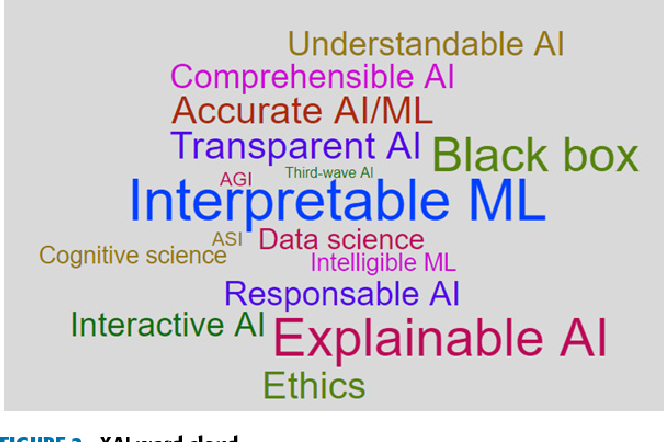
There are many different types of AI, but a common misconception is that only General AI and Self-aware AI are considered Artificial Intelligence. These types of AI are amazing, but we shouldn't confuse them. All three types are equally important and should be studied in depth before we can make a more informed decision. In this article we will go into more detail about each type. Through this, we will gain a better appreciation of how AI works.
AI self-aware
Self-aware and intelligent AI is important to grasp. An AI that assumes too humanlike a nature could end up being very dangerous. Data taken from Star Trek: TNG shows an example of an artificial intelligence that could care for a cat better then a human. While the self-awareness of AI is still far from what we would like it to be, we've made great strides in this field, and some of these innovations are already starting to impact our world.
A robot that can make convincing statements about consciousness might be able, for instance, to fool people into believing that it has consciousness. A superintelligent computer could use neurophysiology to detect the existence of consciousness in humans. Self-aware AI is still a fascinating idea.

General AI
AI can be defined as the ability of an artificial agent learn and understand any intellectual task. This type is one step closer in making intelligent machines comprehend the world. Artificial general intelligence (AGI) is the ability for intelligent agents to learn and understand almost every task that humans can learn. General AI is sometimes called "superintelligence".
While some definitions may refer to general AI others are more specific. A robot that is capable of making decisions based upon a specific task might be included in a general AI definition. The development of a Web aggregater is an example. However, these systems may not be considered intelligent on a human intelligence threshold. Moreover, the outcome of an AI program will depend on the state of the technology, the availability of data, and the desired outcome. If the technology is not understood in its truest meaning, this general AI definition would also be meaningless.
Narrow AI
Artificial intelligence refers to weak artificial intelligence or narrow AI. It implements a small portion of the mind, but does not perform a specific task. John Searle described narrow artificial intelligence as a subset that is weak in artificial intelligence. However, it can be used to test hypotheses and not the real mind. Its goal it to imitate the experience of humans as closely possible. We will not be able to tell if these machines can do complex tasks until they have real-world intelligence.
The limited scope of narrow AI is what can be used to classify it. For example, IBM Watson, a conversational assistant, uses cognitive computing, natural language processing, and machine learning. It was named the winner after it outperformed Ken Jennings, a human contestant on Jeopardy! Google translate and image recognition software are some other examples.

Reactive AI
Reactive AI is the simplest form of artificial intelligence. It responds to the environment it is in, rather than making its own decisions. Deep Blue, IBM’s supercomputer, is an example a reactive AI. The IBM computer faced off against the world's chess champion. Deep Blue was created in order to mirror the human mind. This system is still being investigated today. Despite its basic features it remains controversial because of the way it was built.
Reactive AI uses statistics to analyze the contents of images, which it learns through experience. It then uses this information in order to label new images with greater accuracy. These systems have very limited capabilities and cannot compete in every domain. They do however surpass human capabilities in certain domains. For example in 1997, Garry Kasparov (chess Grandmaster) was defeated by the computer. Although the computer is very limited, it is still capable of performing better than human players.
FAQ
Who is the leader in AI today?
Artificial Intelligence, also known as computer science, is the study of creating intelligent machines capable to perform tasks that normally require human intelligence.
Today, there are many different types of artificial intelligence technologies, including machine learning, neural networks, expert systems, evolutionary computing, genetic algorithms, fuzzy logic, rule-based systems, case-based reasoning, knowledge representation and ontology engineering, and agent technology.
There has been much debate about whether or not AI can ever truly understand what humans are thinking. Recent advances in deep learning have allowed programs to be created that are capable of performing specific tasks.
Google's DeepMind unit has become one of the most important developers of AI software. Demis Hashibis, the former head at University College London's neuroscience department, established it in 2010. DeepMind developed AlphaGo in 2014 to allow professional players to play Go.
Which AI technology do you believe will impact your job?
AI will eventually eliminate certain jobs. This includes jobs such as truck drivers, taxi drivers, cashiers, fast food workers, and even factory workers.
AI will create new jobs. This includes positions such as data scientists, project managers and product designers, as well as marketing specialists.
AI will make your current job easier. This includes positions such as accountants and lawyers.
AI will make it easier to do the same job. This applies to salespeople, customer service representatives, call center agents, and other jobs.
What are the possibilities for AI?
AI serves two primary purposes.
* Prediction - AI systems are capable of predicting future events. A self-driving vehicle can, for example, use AI to spot traffic lights and then stop at them.
* Decision making. AI systems can make important decisions for us. For example, your phone can recognize faces and suggest friends call.
Statistics
- According to the company's website, more than 800 financial firms use AlphaSense, including some Fortune 500 corporations. (builtin.com)
- In 2019, AI adoption among large companies increased by 47% compared to 2018, according to the latest Artificial IntelligenceIndex report. (marsner.com)
- That's as many of us that have been in that AI space would say, it's about 70 or 80 percent of the work. (finra.org)
- More than 70 percent of users claim they book trips on their phones, review travel tips, and research local landmarks and restaurants. (builtin.com)
- A 2021 Pew Research survey revealed that 37 percent of respondents who are more concerned than excited about AI had concerns including job loss, privacy, and AI's potential to “surpass human skills.” (builtin.com)
External Links
How To
How to Set Up Siri To Talk When Charging
Siri can do many things, but one thing she cannot do is speak back to you. This is because your iPhone does not include a microphone. Bluetooth is the best method to get Siri to reply to you.
Here's how Siri will speak to you when you charge your phone.
-
Select "Speak When Locked" under "When Using Assistive Touch."
-
To activate Siri, double press the home key twice.
-
Siri will speak to you
-
Say, "Hey Siri."
-
Say "OK."
-
Tell me, "Tell Me Something Interesting!"
-
Say "I am bored," "Play some songs," "Call a friend," "Remind you about, ""Take pictures," "Set up a timer," and "Check out."
-
Speak "Done."
-
Thank her by saying "Thank you"
-
Remove the battery cover (if you're using an iPhone X/XS).
-
Reinstall the battery.
-
Put the iPhone back together.
-
Connect the iPhone and iTunes
-
Sync the iPhone.
-
Allow "Use toggle" to turn the switch on.